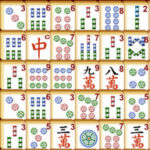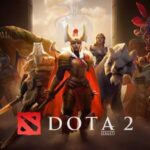Black Myth: Wukong – A Myth Reimagined in Gaming’s Next Visual Masterpiece
In a time when most action RPGs are either sequels or follow predictable templates,
Black Myth: Wukong emerges as a fresh and ambitious title that aims to redefine the genre through stunning visuals, rich Chinese mythology, and Soulslike gameplay mechanics. Developed by
Game Science Studio, a Chinese indie developer founded by ex-Tencent veterans, Black Myth: Wukong is an adaptation of the legendary novel
Journey to the West, offering players a dark and philosophical retelling of the Monkey King’s odyssey.
First revealed in 2020, the game quickly gained international attention for its
unreal visuals, fluid combat, and deeply cultural narrative. As anticipation builds towards its 2024 release, Black Myth: Wukong is shaping up to be a genre-defining experience that combines Eastern philosophy, brutal gameplay, and next-gen technology.
1. Origins of the Journey: Development History and Inspiration
Game Science Studio’s Bold Vision
Founded by former Tencent employees, Game Science Studio aimed to create a truly AAA-quality game inspired by China’s most iconic literary work. The idea was simple but risky — adapt
Journey to the West with
Soulslike gameplay, emotional storytelling, and cutting-edge graphics.
From Tech Demo to Global Buzz
In August 2020, the studio released a 13-minute gameplay trailer. The world responded with awe. Critics and fans marveled at the smooth animations, immersive world design, and Eastern storytelling. Within days, the video hit millions of views, sparking headlines like “The First Chinese AAA Game That Might Go Global.”
2. The World of Black Myth: Chinese Mythology Reborn
A Universe Rooted in Spiritual Lore
Black Myth: Wukong doesn’t just borrow visuals from Chinese mythology—it
lives and breathes it. Players will traverse lands inhabited by legendary beasts, corrupted immortals, and ancient spirits that reflect Taoist, Buddhist, and Confucian influences.
Story and Setting
You play as
the Destined One, often associated with
Sun Wukong, who must uncover the truth of his origin, destiny, and spiritual path. The game explores themes of
identity, karma, and moral ambiguity in a world that is as beautiful as it is brutal.
Notable Mythological References:
- The White Dragon Horse transformed into a boss
- Spider spirits from Buddhist folklore
- The immortal elixir and the heavenly court
3. Gameplay Mechanics: Soulslike with a Twist
Combat: Tactical and Brutal
While the game draws comparisons to
Dark Souls,
Sekiro, and
Elden Ring, it introduces unique mechanics like:
- Staff combat with multi-form abilities
- Transformation into beasts for tactical advantages
- Magic spells derived from Taoist principles
Every encounter demands patience, strategy, and understanding enemy patterns. Dodging, parrying, and exploiting elemental weaknesses are essential.
RPG Elements
Players can customize abilities, collect resources, and unlock
different fighting forms, giving flexibility in combat. There’s also progression through
mindfulness, tying gameplay to the story’s spiritual themes.
4. Visuals and Design: Setting a New Standard
Unreal Engine 5 Powerhouse
Black Myth: Wukong is built on
Unreal Engine 5, showcasing
ray tracing,
real-time global illumination, and
dynamic weather systems. The visuals are nothing short of groundbreaking.
Artistic Direction
The game blends
hyper-realistic textures with
painterly art direction, resulting in a world that feels ancient yet alive. The architecture, costumes, and creatures are all deeply researched, staying true to Chinese traditions.
Visual Highlights:
- Forests that shift with time of day
- Snowy cliffs with howling wind FX
- Intricately detailed bosses with multi-phase transitions
5. Enemies and Boss Fights: Fearsome and Symbolic
Epic Boss Encounters
Boss battles are the centerpiece of gameplay. Each boss is not only a
combat challenge, but also a
symbolic test. These encounters explore philosophical themes — rage, temptation, fear, enlightenment.
Examples of boss types:
- Giant spiders representing lust
- Corrupted monks using soul-absorbing chants
- Demonic generals wielding flame and shadow
AI and Enemy Design
Bosses use
multi-stage behavior. They adapt to your tactics and often unleash
cinematic finishing moves. Mini-bosses and mob enemies are equally dangerous, with unique attack sets and weaknesses.
6. Transformation Abilities and the Staff of Power
Shapeshifting and Form Switching
A standout mechanic in Black Myth is the ability to
transform into animals, such as:
- A giant insect for stealth traversal
- A wolf spirit for speed attacks
- A dragonfly to escape danger
These transformations are tied to resource management and narrative events, offering puzzle-solving capabilities and new ways to approach combat.
The Ruyi Jingu Bang (Golden-Banded Staff)
The protagonist’s staff is more than a weapon — it’s an extension of identity. It can expand, split, and swing with divine force. Unlocking its hidden powers allows creative combat customization.
7. Narrative Depth: Philosophy, Morality, and Enlightenment
Not a Traditional Hero Tale
Wukong’s journey in this game is darker and more introspective. The story explores
moral gray areas, forcing players to reflect on:
- What is the cost of power?
- Is immortality a curse?
- Can redemption erase past sins?
Multiple Endings and Choices
While the game follows a structured path, player choices influence
narrative outcomes. Minor decisions in side quests affect relationships, karma, and ultimately the character’s
path to spiritual awakening or destruction.
Themes Explored:
- Samsara (cycle of rebirth)
- Attachment vs. liberation
- The illusion of self
8. Audio, Voice Acting, and Soundtrack
Cinematic Sound Design
The game’s
soundtrack fuses orchestral arrangements with traditional Chinese instruments like guzheng, erhu, and dizi. Each environment has a dynamic audio layer that changes during combat and exploration.
Voice Acting and Localization
The original game is voiced in
Mandarin Chinese, with plans for full localization in English, Japanese, and other major languages. The delivery is
theatrical yet grounded, pulling players deeper into the story.
Audio Features:
- Ambient sounds reflecting season and region
- Voice shifts in inner dialogues and hallucinations
- Minimal UI for immersive audio storytelling
9. Release Date, Platforms, and System Requirements
Launch Plans
Black Myth: Wukong is expected to release in
mid-2024, available on:
- PC
- PlayStation 5
- Xbox Series X|S
A future cloud version or streaming platform adaptation may also be in the pipeline, considering the game’s demanding specs.
System Requirements (Estimated for PC)
Minimum:
- CPU: Intel i7-8700 / Ryzen 5 3600
- GPU: GTX 1060 / RX 580
- RAM: 16 GB
Recommended:
- CPU: Intel i9-10900K / Ryzen 7 5800X
- GPU: RTX 3080 / RX 6800 XT
- RAM: 32 GB
Conclusion: Black Myth: Wukong is the East’s Answer to the West’s Dark Souls
Black Myth: Wukong is not just a game; it’s a myth reborn. With jaw-dropping visuals, dense storytelling, and combat that rewards discipline, it delivers a rare mix of artistry and difficulty. This is a title that challenges what a Chinese-developed game can look like on the world stage.
By faithfully reimagining
Journey to the West while embracing modern game design principles, Game Science has created what could be
the most important Eastern action RPG since Sekiro. If executed well, Black Myth: Wukong will not just be a landmark in Chinese gaming — it will be a new gold standard for the global gaming industry.


























